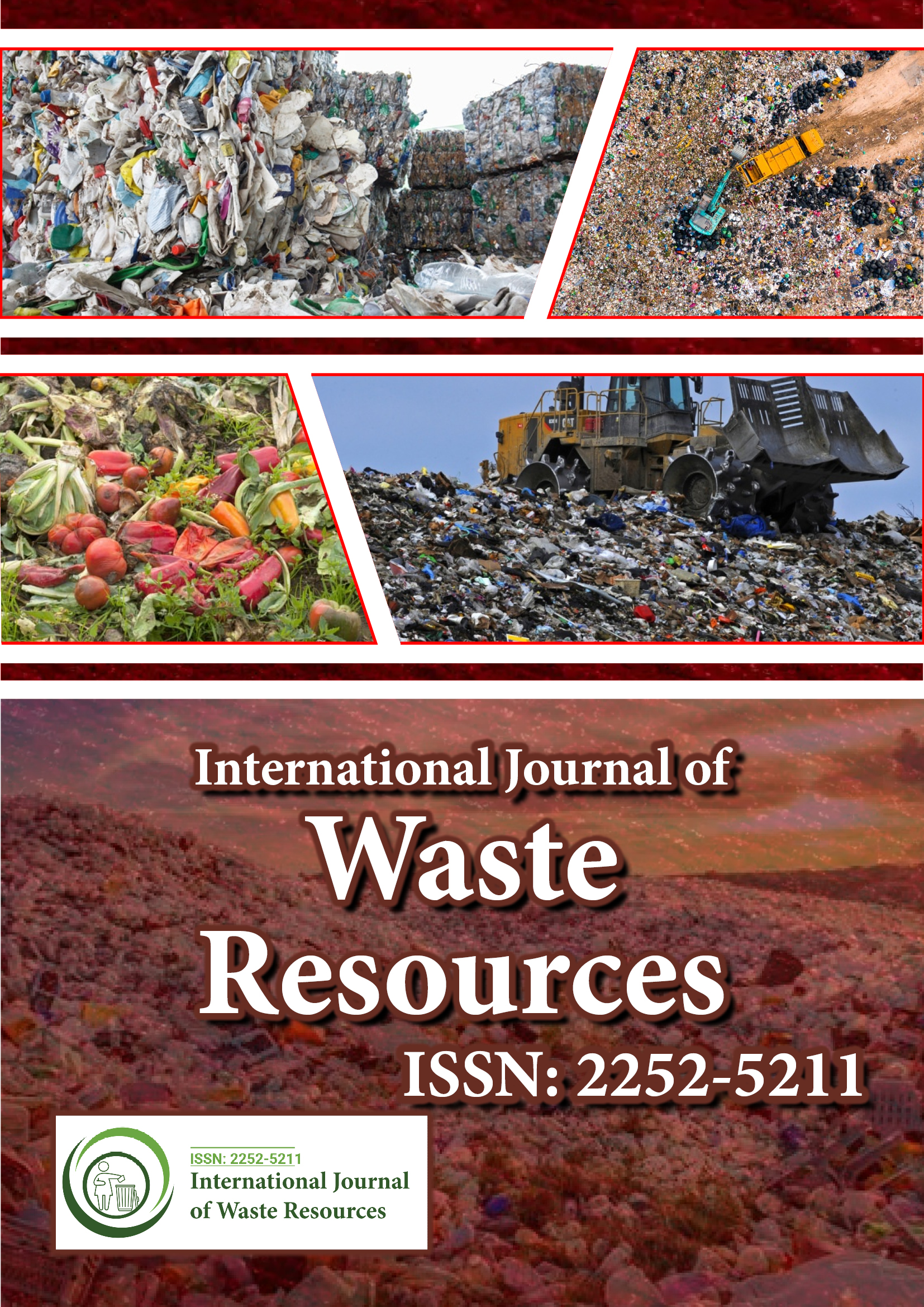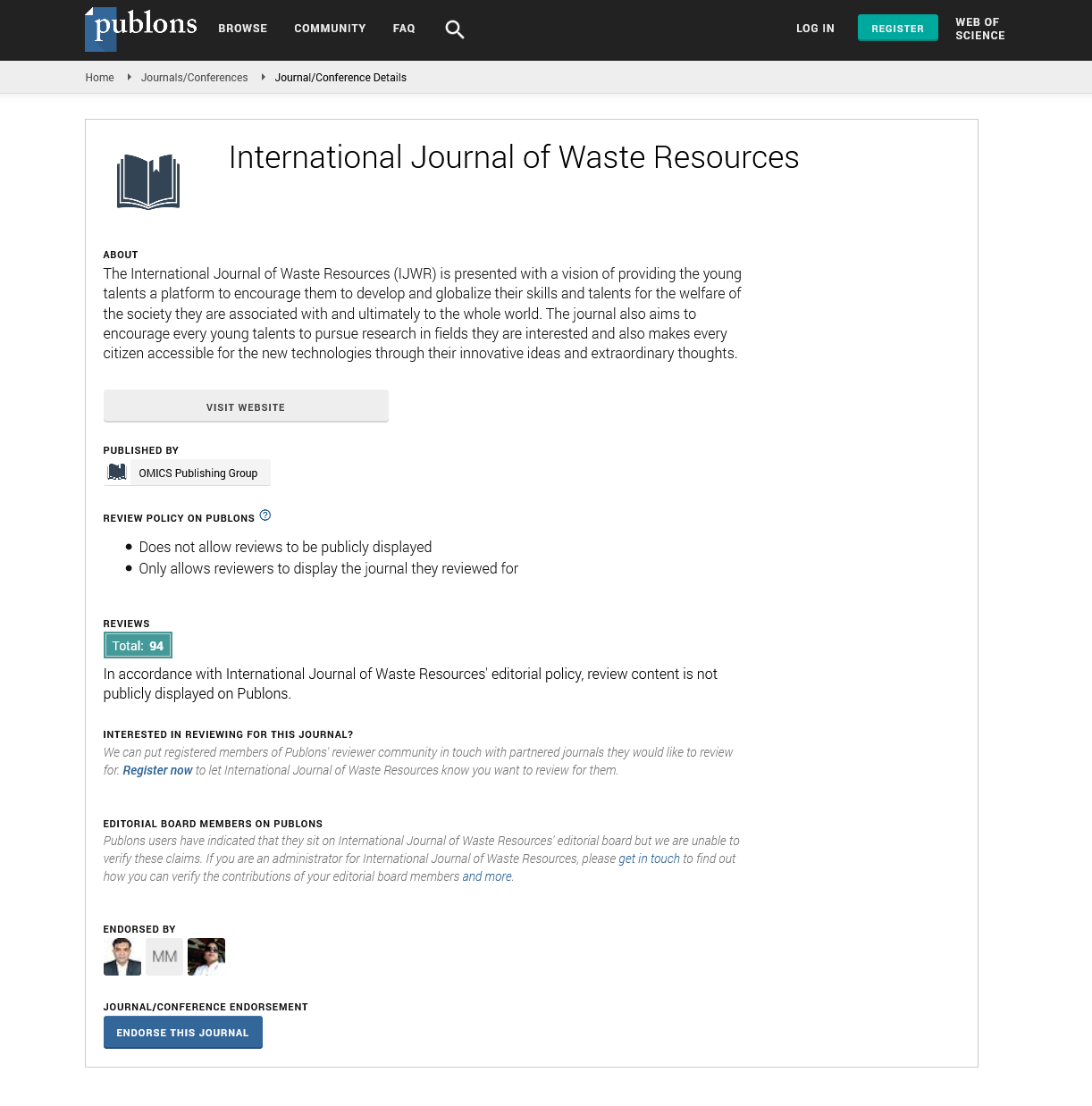Indexed In
- Open J Gate
- The Global Impact Factor (GIF)
- Open Archive Initiative
- VieSearch
- International Society of Universal Research in Sciences
- China National Knowledge Infrastructure (CNKI)
- CiteFactor
- Scimago
- Ulrich's Periodicals Directory
- Electronic Journals Library
- RefSeek
- Directory of Research Journal Indexing (DRJI)
- Hamdard University
- EBSCO A-Z
- Publons
- Google Scholar
Useful Links
Share This Page
Journal Flyer

Open Access Journals
- Agri and Aquaculture
- Biochemistry
- Bioinformatics & Systems Biology
- Business & Management
- Chemistry
- Clinical Sciences
- Engineering
- Food & Nutrition
- General Science
- Genetics & Molecular Biology
- Immunology & Microbiology
- Medical Sciences
- Neuroscience & Psychology
- Nursing & Health Care
- Pharmaceutical Sciences
Commentary - (2024) Volume 14, Issue 3
Strategies for Promoting Community Involvement in Waste Segregation
Aldrian Doudou*Received: 28-Aug-2024, Manuscript No. IJWR-24-27472; Editor assigned: 30-Aug-2024, Pre QC No. IJWR-24-27472(PQ); Reviewed: 13-Sep-2024, QC No. IJWR-24-27472; Revised: 20-Sep-2024, Manuscript No. IJWR-24-27472(R); Published: 27-Sep-2024, DOI: 10.35248/2252-5211.24.14.586
Description
Waste segregation at the community level is essential for effective waste management, resource recovery and environmental protection. However, encouraging consistent waste segregation requires more than infrastructural support; it demands a behavioral shift in individuals and communities. Community engagement plays a pivotal role in fostering this change by making waste segregation a shared responsibility. This article discusses effective strategies to encourage community participation, drive behavioral change and ensure the long-term success of waste segregation initiatives. Community engagement in waste segregation involves encouraging people to understand and embrace the importance of sorting waste at the source. Segregation helps reduce landfill burden, improves recycling efficiency and minimizes pollution by preventing hazardous waste from mixing with biodegradable or recyclable waste. When communities are actively engaged, waste segregation becomes a collective action rather than an individual task, leading to higher compliance and more sustainable outcomes. By promoting segregation practices at the household level, communities can foster a culture of environmental responsibility and contribute to broader sustainability goals. Despite its benefits, waste segregation faces several challenges. A lack of awareness about waste categories, limited access to appropriate waste bins and inconsistent waste collection systems can hinder efforts. Moreover, misconceptions about the environmental impact of waste segregation and a lack of personal responsibility often discourage individuals from actively participating. Behavioral resistance, particularly the "out of sight, out of mind" mentality, often leads individuals to ignore waste segregation efforts once waste is disposed of. Addressing these challenges requires well-thought- out strategies that target behavior at the community level. Awareness is the first step toward changing behavior. Educational campaigns that inform people about waste types, environmental impacts and the significance of waste segregation are essential. Campaigns can include workshops, informational brochures, posters and community events that explain the segregation process and its environmental benefits.
Collaborating with schools, workplaces and community centers to run awareness programs can help create a ripple effect, where information reaches a broader audience through various social channels. Incorporating visual aids, such as charts that depict different types of waste (biodegradable, recyclable, hazardous and electronic), can simplify the understanding process. When community members are equipped with clear knowledge, they are more likely to adopt and promote waste segregation. Local governments and private entities can partner to provide incentives, such as discounts or rewards, to households that regularly participate in waste segregation. Such incentives can create a positive feedback loop, motivating individuals to make waste segregation a routine habit. One of the main obstacles to waste segregation is the lack of user-friendly infrastructure. Providing color-coded bins for different types of waste at strategic locations such as public parks, shopping centers, schools and residential complexes can encourage individuals to segregate their waste. Clear labeling and instructions on bins help people quickly identify where to dispose of specific waste items, reducing confusion and promoting consistent segregation practices. Establishing community-led waste management committees can foster a sense of ownership among residents. These committees can oversee waste segregation efforts, organize events, monitor compliance and act as a liaison between residents and waste management authorities. By involving community members directly, these committees empower individuals to take responsibility for waste segregation and hold each other accountable. These committees can also conduct regular assessments to identify areas for improvement, such as adding bins or providing better informational resources. When community members feel they have a voice in the process, they are more likely to take their roles in waste segregation seriously. Providing feedback to the community on the outcomes of their waste segregation efforts can reinforce positive behavior.
Conclusion
Regular updates on waste reduction statistics, recycling rates and the environmental impact achieved through community efforts can help maintain motivation and a sense of accomplishment. Transparency in waste management processes, such as where the segregated waste is taken and how it is processed, can increase community trust and encourage continued participation. Social media campaigns can also play a role by providing a platform for sharing tips, success stories and community achievements in waste segregation. These platforms can create a sense of community and encourage others to take part in sustainable waste practices.
Citation: Doudou A (2024). Strategies for Promoting Community Involvement in Waste Segregation. Int J Waste Resour. 14:586.
Copyright: © Doudou A. This is an open-access article distributed under the terms of the Creative Commons Attribution License, which permits unrestricted use, distribution, and reproduction in any medium, provided the original author and source are credited.

